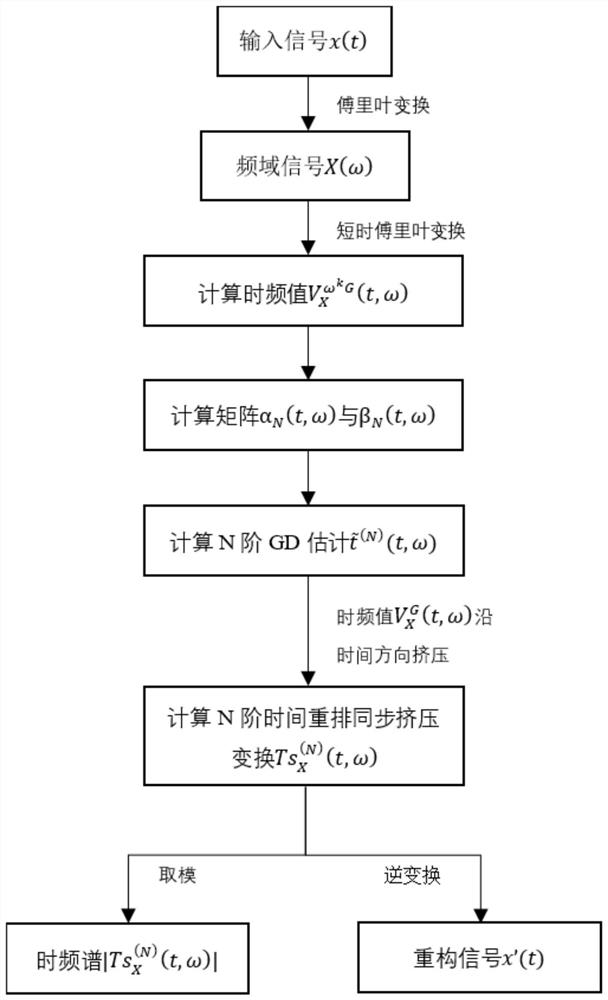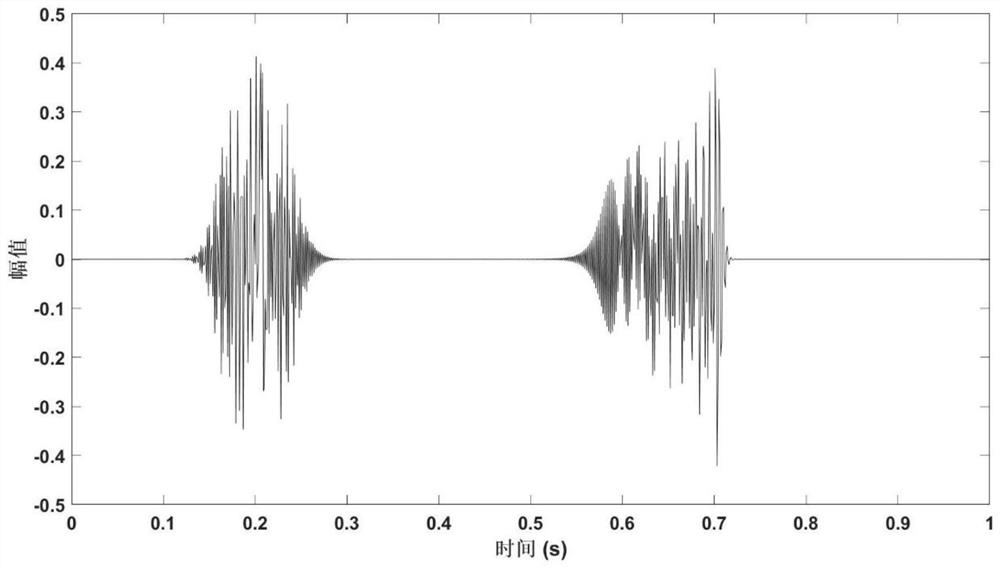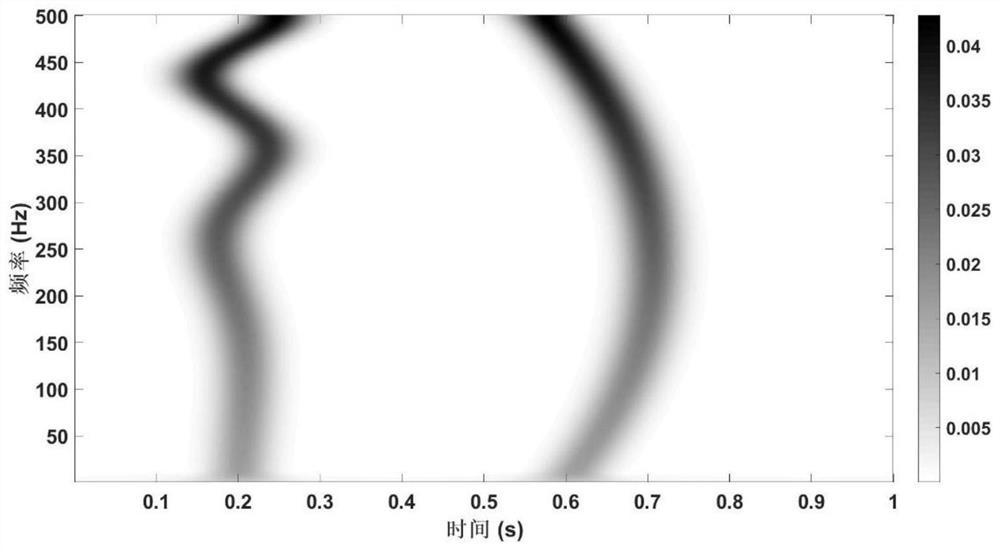Time-Frequency Analysis Method for High-Precision High-order Time-Rearrangement Synchronous Squeeze Transform
A technology of synchronous extrusion and time-frequency analysis, which is applied in the field of signal processing, can solve the problems of limited GD estimation accuracy and affect signal processing effects, and achieve the effects of improving time-frequency readability, suppressing energy divergence, and high-precision reconstruction
- Summary
- Abstract
- Description
- Claims
- Application Information
AI Technical Summary
Problems solved by technology
Method used
Image
Examples
Embodiment 1
[0049] Embodiment 1: see figure 1 , a high-precision high-order time rearrangement synchronous squeeze transform time-frequency analysis method, comprising the following steps:
[0050] (1) Obtain a time-domain signal x(t), perform Fourier transform to obtain a frequency-domain signal X(ω), t is time, and ω is frequency;
[0051] (2) Select order N and frequency window function G(ω), calculate X(ω) at ω k Short-time Fourier transform under G(ω) to obtain different time-frequency values corresponding to time-frequency points (t,ω) Where N is a positive integer, k=0,1,2,...,max{1,2N-2}, and when k=0, G(ω)=ω 0 G(ω), use Construct N order square matrix α N (t,ω) and β N (t,ω);
[0052]
[0053]
[0054] In the formula, s is the adjustment factor in the window function G(ω);
[0055] (3) Using the N-order square matrix α N (t,ω) and β N (t,ω) to calculate the Nth order group delay estimate
[0056] When β N When the determinant value of (t,ω) is not zero,...
Embodiment 2
[0060] Embodiment 2: It also includes step (6), obtaining the reconstructed signal x'(t) through N-order time rearrangement and synchronous squeezing inverse transformation. All the other are identical with embodiment 1.
Embodiment 3
[0061] Embodiment 3: This embodiment is the same as Embodiment 2, the difference is that in step (2), Obtained by the following formula;
[0062]
[0063]
[0064] In the formula, v is a frequency variable and is independent of the value of ω, i is the imaginary number unit, G * (ω) represents taking the complex conjugate of G(ω).
[0065] In step (3), the N-order group delay estimation is specifically calculated using the following formula
[0066]
[0067] In the formula, Im means to take the imaginary part of the complex number.
[0068] In step (4), specifically use the following formula to obtain the N-order time rearrangement synchronous extrusion transformation
[0069]
[0070] In the formula, u is a time variable, and it is a different time variable that has nothing to do with the value of t, and the function σ(x) is a Dirac function.
[0071] In step (6), specifically adopt the following formula to obtain the reconstructed signal x'(t);
[0072]...
PUM
 Login to View More
Login to View More Abstract
Description
Claims
Application Information
 Login to View More
Login to View More - R&D
- Intellectual Property
- Life Sciences
- Materials
- Tech Scout
- Unparalleled Data Quality
- Higher Quality Content
- 60% Fewer Hallucinations
Browse by: Latest US Patents, China's latest patents, Technical Efficacy Thesaurus, Application Domain, Technology Topic, Popular Technical Reports.
© 2025 PatSnap. All rights reserved.Legal|Privacy policy|Modern Slavery Act Transparency Statement|Sitemap|About US| Contact US: help@patsnap.com



